1. Introduction
This column presents the main findings of a survey on standardization activities conducted in 2020 [1]. Based on these results, I discuss the current status of standardization activities and their policy implications. This survey investigated the standardization activities of Japanese companies and other institutions in 2020, focusing on the organizational attributes and factors that influence knowledge creation. To observe ongoing changes, the survey items were the same as those in previous surveys conducted in 2017, 2018, and 2019 [2, 3, 4]. The survey was conducted between December 2021 and June 2022.
2. Summary of Survey Results
Questionnaires were distributed to approximately 180 companies and other institutions. A total of 124 responses were received by mail or e-mail (as of June 2022). The collection rate was 67%.
2.1. Standardization Implementation Status and Research and Development (R&D) Budget Allocation by Industry Category
Of the respondents, 68.0% (83) indicated that they were conducting standardization activities. This figure is similar to the 67.4% (62) observed in the 2019 survey results, but higher than the 62.4% (78) in 2018 and 60.8% (62) in 2017 (Table 1). This increase is consistent with recent advances in digital technology and may reflect the increasing use of digital technology. However, further investigation is required. The percentage of respondents managing standardization activities has generally been about 60-70% in the four years of these surveys.
Tables 2 and 3 show the frequency of standardization activities by industry and R&D budget, respectively. The industries with higher-than-average frequency are “Information and communications” and “Electric machinery”, while the industry with lower-than-average frequency is “Wholesale and retail”. In terms of R&D budgets, the ratio of standardization activities tends to be higher for firms with larger R&D budgets.
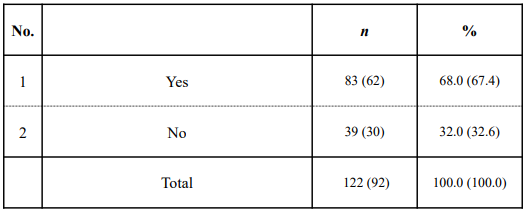
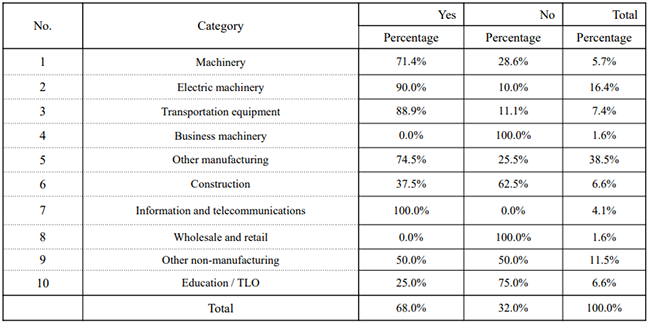
[Click to enlarge]
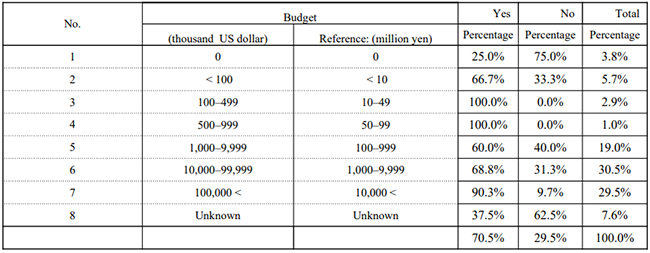
[Click to enlarge]
2.2 Reasons for not Implementing Standardization Activities
Table 4 shows why companies do not engage in standardization activities (multiple responses are possible). These reasons are useful when considering measures to promote standardization activities. The most common reasons given were that the products/services being produced did not require standardization and that already established standards were used. These two factors can be attributed to the characteristics of their products and services. The next most common concerns were the risk of unlawful disclosure of technical information and high cost of participation. Concerns about the former may reflect a growing awareness of the need to manage R&D information, particularly regarding economic security issues. These results suggest that a company’s implementation of standardization activities is mainly influenced by the nature of the goods and services supplied.
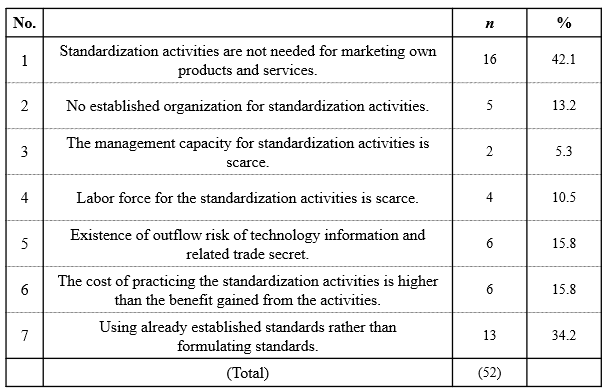
2.3 Organizational Design for Standardization Activities
Forty-four companies (40.0%) indicated that they had an organization in place to oversee standardization activities (Table 5), similar to the results of 2017, 2018, and 2019 [2, 3, 4]. The differences by industry sector and R&D budget are presented in Tables 6 and 7. “Information and communications”, “Electric machinery”, and “Other manufacturing” were more likely to have developed organizations related to standardization activities. Companies with larger R&D budgets tended to have a higher ratio of standardization organizations. This trend is similar to that in the implementation of standardization activities, where the higher the R&D budget, the higher the implementation rate.
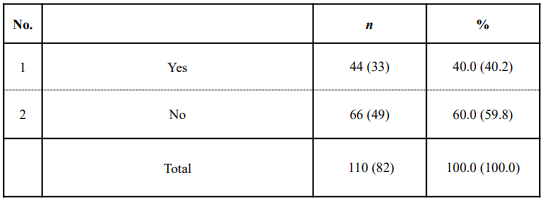
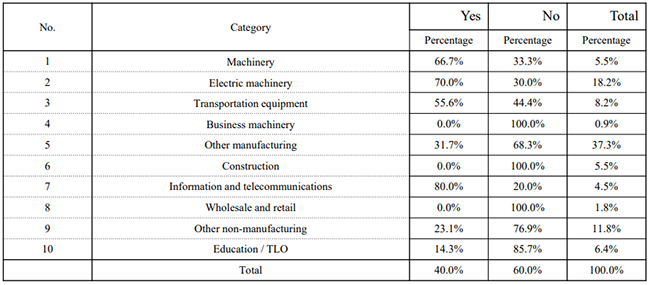
[Click to enlarge]
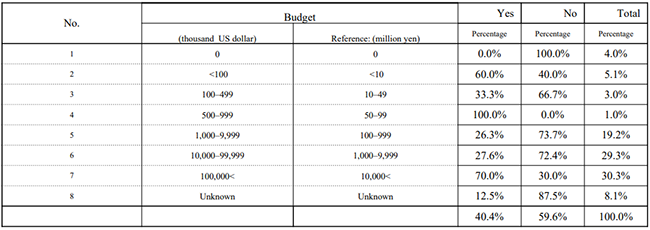
[Click to enlarge]
2.4 Protection of R&D Information and Trade Secrets
To protect technical information, along with the commitment of participants in standardization activities, it is necessary for standards development organizations (SDOs) that conduct standardization activities to establish and properly manage protection rules. Table 8 presents the results of a survey on the management of research information in SDOs. Standardization activities in SDOs can be regarded as joint implementation of developmental research. Of the respondents, nearly 27% responded that “confidentiality of information is required, but no non-disclosure agreement (NDA) is required” or “confidentiality of information is not required”. In addition, 8.6% of respondents were involved in the conclusion of an NDA. Policymakers should understand that this is an operational challenge for the SDOs.
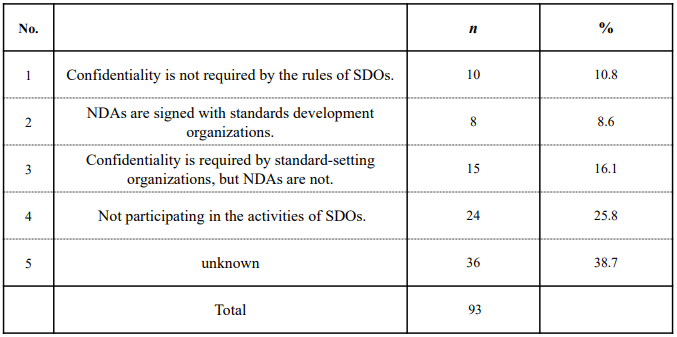
3. Conclusion
The following findings were obtained from the survey. An upward trend was observed in the level of standardization implementation compared with previous surveys in 2018 and 2017 [2, 3]. This increase is consistent with recent advances in digital technology and may reflect the increasing use of digital technology in social systems. In promoting digitization, the development of technical standards is an important policy issue that should be implemented. In addition, the development of organizations to manage standardization activities is similar to that in previous years. Management rules for R&D information related to standardization activities in SDOs were not implemented at a high rate.
Acknowledgments
I would like to express my sincere appreciation to those who made time to respond to the survey requests despite their busy schedules and to all those who cooperated in responding to the survey. This study was supported by JSPS Grants-in-Aid for Scientific Research (15K03718, 19K01827, and 23K01529; Principal Investigator: TAMURA, Suguru). Because this remark provides important academic information, the JSPS granting policy is appended as follows: “The views and responsibilities regarding research results resulting from a grant shall exclusively belong to the researcher; the implementation and publication of the research results are not based on requests from the Japanese government body that provides the grant. Namely, research funded by Grants-in-Aid for Scientific Research shall be conducted under the individual researcher’s authority, with the researcher’s awareness and responsibility.” (Handbook on Grants-in-Aid for Scientific Research Program [Japan Society for the Promotion of Science] [in Japanese]) (Note 3).
November 29, 2022
>> Original text in Japanese


